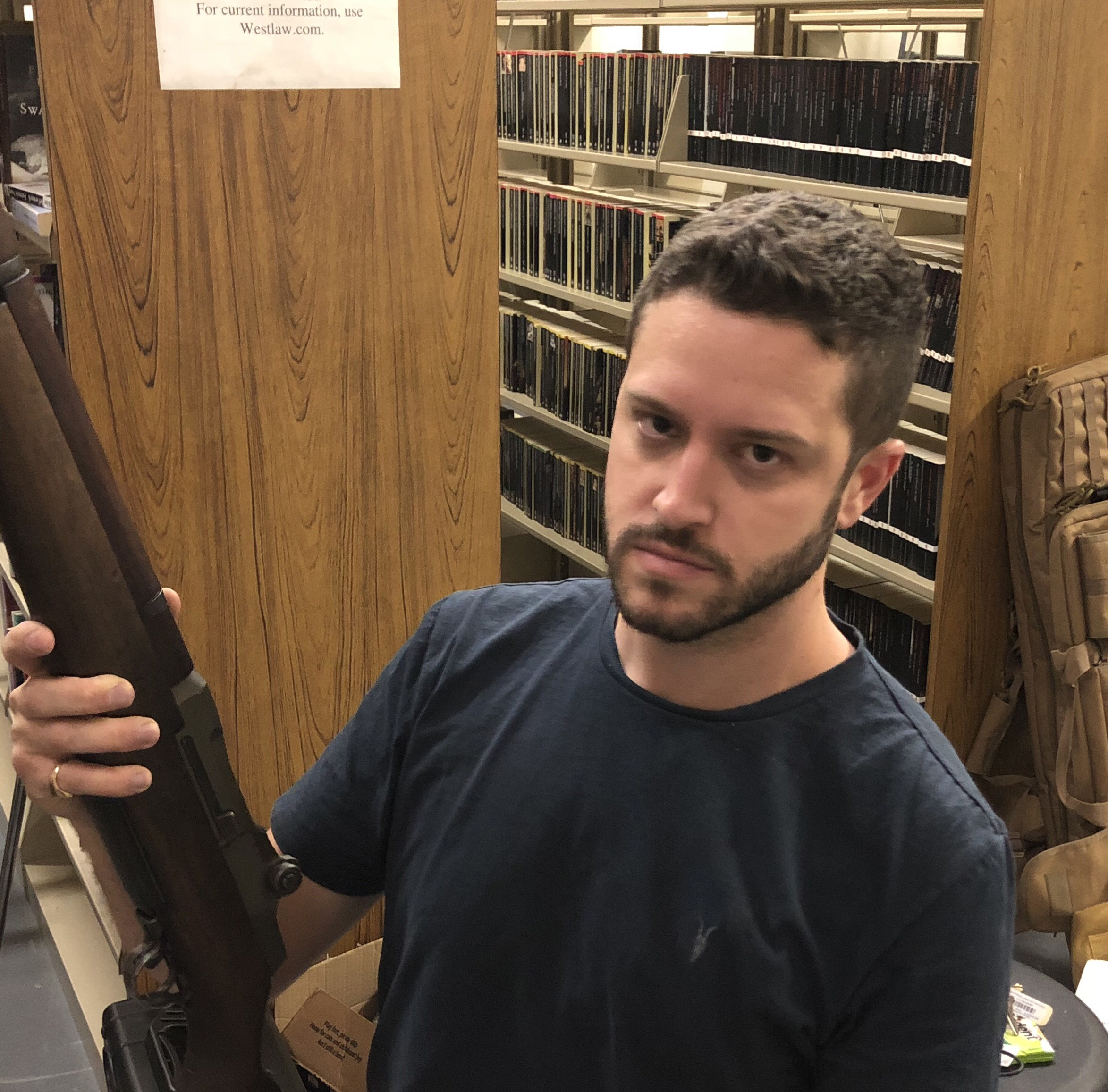 Cody Wilson, above, is the founder of Defense Distributed.
Cody Wilson, above, is the founder of Defense Distributed.
But the case is far from over.
Concern over 3-D printed firearms reached a fever pitch this week with Democratic politicians pointing to fears of the proliferation of untraceable plastic guns. Even the president weighed in, saying the guns did not "seem to make much sense."
The debate, in large part, pits the First Amendment against the Second, raising questions that would typically seem unrelated:
Can the federal government prevent an American from giving knowledge away? Are 3-D printed firearms a threat to national security? How are plastic guns untraceable? Will people be able to print them at the library?
What are the answers, and where do the issues intersect?
• What are 3-D printed guns?
They're a subset of do-it-yourself firearms, where parts are fabricated with a 3-D printer, often in polymer plastic, nylon or metal, to create a gun or rifle. Plastic versions of 3-D weapons are commonly referred to as 'ghost guns,' a broad term referring to DIY guns manufactured from several parts, and are more fragile, often break down or disintegrate after several shots fired. Printed metal guns, however, can fire more than 500 continuous rounds.
According to Adrian Bowyer, a retired engineer and inventor of the RepRap Project, an open-source self-replicating 3-D printer, the machines aren't suitable for weapon-making because the key component of a firearm is that it's cylindrical and rotationally symmetric. The technology is restricted to available printing materials, and "the ones that work with metals don't provide the best results," Bowyer said, adding that it's much better to make guns with conventional tools, like a lathe.
3-D printers can also be costly. When the printing technology first hit the market, the cheapest 3-D printer cost $40,000, according to Bowyer. Now, over 10 years later, he said, prices are on par with that of a computer.
• What are the main concerns about 3-D printed firearms?
According to State Department spokeswoman Heather Nauert, Computer Assisted Design files - called blueprints - have been available in the United States for download since at least 2013, though technical knowledge and access to press mills limited their ability to become a ubiquitous threat.
Since then, the machines have become more readily available. Manufacturing companies, engineering schools and public libraries even host public spaces to 3-D print, fueling fears among gun-control advocates and Democratic lawmakers that 3-D-printed guns are a future threat.
The concerns surrounding these weapons are threefold:
(1) Homemade guns make weapons accessible to individuals who otherwise would not pass a background check. This includes people typically barred from acquiring firearms by state and federal law, like children, the mentally ill and felons.
(2) Pure plastic 3-D printed guns are undetectable by metal detectors.
(3) They also have no serial number, eliminating an effective investigative tool for law enforcement. Officials link firearms to weapon supply chains and determine past sellers and purchasers with serial numbers. In 2016, of the almost-300,00 firearms recovered in the United States, over 70 percent were able to be traced by the Bureau of Alcohol, Tobacco, Firearms and Explosives's National Tracing Center.
"The last thing we need now are people making guns in their own home that circumvent all laws, are untraceable, and are invisible," said New York Gov. Andrew M. Cuomo, on Tuesday. "If a state chooses to allow this product to be distributed, I think they're making a mistake."
• How did the State Department get involved?
In April 2013, Cody Wilson, founder of Defense Distributed, printed his first fully 3-D printed pistol, including the receivers, springs and barrels. Then he open-sourced the files, posting them on an unregulated file-sharing website. At the time, exports within the International Traffic in Arms Regulations was under the State Department's purview.
The Department of Justice worked with the State Department throughout Wilson's case, according to Nauert. Ultimately, DOJ advised the federal government to settle, believing it was likely to lose in court on First Amendment grounds, said Nauert.
• Is this a First or Second Amendment issue?
According to Wilson, it's a pure First Amendment argument, which is why the case has been, and continues to be, argued on a First Amendment theory.
"Americans have an interest in their speech," said Wilson to The Washington Post. "I'm not a gun manufacturer, I'm putting knowledge into the public domain," he said, reinforcing that publishing a digital file is protected speech under the First Amendment.
"(Code) is the essence of expression," said Wilson. "It meets all the requirements of speech - it's artistic and political, you can manipulate it, and it needs human involvement to become other things." Alternatively, he said that a digital file cannot legally be characterized as 'a gun.' "It doesn't want to become anything; you still have to make it one," he said.
Wilson, Defense Distributed and the Second Amendment Foundation have maintained that the case is a First Amendment case with Second Amendment issues, arguing that the government's attempts to block online publication of the information amounts to a violation of free speech barred by Supreme Court precedent.
Many gun-safety advocates, including Avery Gardiner, the president of the Brady Center to Prevent Gun Violence, disagreed, claiming that the case is neither a First nor a Second Amendment issue.
For decades, courts have upheld reasonable restrictions on First and Second rights that are guaranteed by the Constitution, including restrictions for public safety, she said.
"Here, there was no decision by a judge from a court opining on the scope of the First or Second Amendments. The case involves a settlement with the State Department and Cody Wilson, which is not binding and not based on a court's constitutional interpretation," said Gardiner.
Regulating homemade weapons remains a future-facing obstacle. For now, Wilson's website will not move forward until Aug. 10, when the parties will return to federal court.
Deanna Paul covers national and breaking news for The Washington Post. Before joining The Post, she spent six years as a New York City prosecutor.
Previously:
• 07/20/18: Trump promised to remake the courts. He's installing conservative judges at a record pace
• 07/19/18: Meet the man who might have brought on the age of 'downloadable guns'
• 07/13/18: Burgular who broke into an escape room repeatedly called 911 when he couldn't escape, police say


 Contact The Editor
Contact The Editor
 Articles By This Author
Articles By This Author